
Oberpfälzer Wald: A Tranquil Haven in Germany
Explore Oberpfälzer Wald in Germany: A serene escape filled with lush forests, charming villages, historical sites, and outdoor adventures for nature and culture enthusiasts.
Nestled in the heart of Bavaria, Oberpfälzer Wald, also known as the Upper Palatinate Forest, offers a captivating experience for nature lovers, history buffs, and adventurers alike. This picturesque region is characterized by its rolling hills, lush forests, and serene lakes. It provides an idyllic escape from the hustle and bustle of city life, allowing visitors to immerse themselves in the natural beauty and tranquility of the German countryside. A visit to Oberpfälzer Wald is incomplete without exploring its charming villages and historical sites. The area is dotted with medieval castles, ancient churches, and quaint towns that tell the story of its rich cultural heritage. The town of Neunburg vorm Wald, with its well-preserved medieval architecture, is a perfect starting point for your journey. Don't miss the chance to visit the imposing Leuchtenberg Castle, which offers breathtaking views of the surrounding landscape. Outdoor enthusiasts will find plenty of activities to keep them engaged. The region boasts an extensive network of hiking and biking trails, suitable for all levels of fitness. The Goldsteig Trail, one of Germany's top long-distance hiking paths, winds its way through Oberpfälzer Wald, offering stunning vistas and a chance to encounter local wildlife. For a more leisurely experience, the Oberpfälzer Seenland, a series of interconnected lakes, provides opportunities for swimming, boating, and picnicking. Oberpfälzer Wald is also a haven for food and drink aficionados. The local cuisine reflects the region's agricultural roots, with hearty dishes made from fresh, locally-sourced ingredients. Be sure to try traditional Bavarian specialties such as Bratwurst, Sauerkraut, and the famous Oberpfälzer Zoigl beer, brewed in small, family-run breweries that have been perfecting their craft for generations.
Local tips in Oberpfälzer Wald
- Visit in spring or autumn for the best weather and fewer crowds.
- Wear comfortable walking shoes, as many attractions are best explored on foot.
- Carry cash, as some local establishments do not accept credit cards.
- Check local festivals and events calendar to experience regional culture.
- Try the local Zoigl beer; each brewery has its own unique flavor.
Oberpfälzer Wald: A Tranquil Haven in Germany
Nestled in the heart of Bavaria, Oberpfälzer Wald, also known as the Upper Palatinate Forest, offers a captivating experience for nature lovers, history buffs, and adventurers alike. This picturesque region is characterized by its rolling hills, lush forests, and serene lakes. It provides an idyllic escape from the hustle and bustle of city life, allowing visitors to immerse themselves in the natural beauty and tranquility of the German countryside. A visit to Oberpfälzer Wald is incomplete without exploring its charming villages and historical sites. The area is dotted with medieval castles, ancient churches, and quaint towns that tell the story of its rich cultural heritage. The town of Neunburg vorm Wald, with its well-preserved medieval architecture, is a perfect starting point for your journey. Don't miss the chance to visit the imposing Leuchtenberg Castle, which offers breathtaking views of the surrounding landscape. Outdoor enthusiasts will find plenty of activities to keep them engaged. The region boasts an extensive network of hiking and biking trails, suitable for all levels of fitness. The Goldsteig Trail, one of Germany's top long-distance hiking paths, winds its way through Oberpfälzer Wald, offering stunning vistas and a chance to encounter local wildlife. For a more leisurely experience, the Oberpfälzer Seenland, a series of interconnected lakes, provides opportunities for swimming, boating, and picnicking. Oberpfälzer Wald is also a haven for food and drink aficionados. The local cuisine reflects the region's agricultural roots, with hearty dishes made from fresh, locally-sourced ingredients. Be sure to try traditional Bavarian specialties such as Bratwurst, Sauerkraut, and the famous Oberpfälzer Zoigl beer, brewed in small, family-run breweries that have been perfecting their craft for generations.
When is the best time to go to Oberpfälzer Wald?
Iconic landmarks you can’t miss
Old Stone Bridge
Discover the Old Stone Bridge in Regensburg, a historic landmark that links the past with stunning views of the Danube and the charming medieval town.

Baumwipfelpfad Bavarian Forest
Discover the stunning treetop pathways of Baumwipfelpfad Bavarian Forest, where nature and adventure intertwine for a memorable experience.

Walhalla
Explore the grandeur of Walhalla, a stunning monument honoring Germany's historical figures with breathtaking views and rich cultural significance.

Nationalpark Bayerischer Wald
Explore the breathtaking landscapes and rich biodiversity of National Park Bayerischer Wald, Germany's first national park, perfect for outdoor adventures.

Drachenhöhle
Discover the enchanting Drachenhöhle in Furth im Wald, a breathtaking underground marvel filled with stunning formations and rich local folklore.

Pottenstein Castle
Discover Pottenstein Castle: A historical landmark that offers breathtaking views, engaging exhibits, and a glimpse into Bavaria's rich cultural heritage.

Gößweinstein Castle
Explore Gößweinstein Castle - A historical gem in Bavaria with stunning vistas, rich culture, and a delightful beer garden.

Waldnaabtal
Explore the breathtaking landscapes and diverse wildlife of Waldnaabtal, a serene refuge near Falkenberg, Germany.

Burgruine Leuchtenberg
Experience history and nature at Burgruine Leuchtenberg, a captivating castle ruin offering breathtaking views and scenic hiking trails in Oberpfalz, Germany.

Upper Palatinate Tower
Discover the breathtaking views and serene landscapes of the Upper Palatinate Tower in Waldershof, a must-visit observation deck in Bavaria.

Falkenberg Castle
Explore the breathtaking Falkenberg Castle, a historical gem in Bavaria's Upper Palatinate Forest, offering rich history and stunning views.

Naturdenkmal Hochfels
Explore the stunning landscapes and breathtaking views at Naturdenkmal Hochfels in Stadlern, an unmissable scenic spot for all nature lovers.
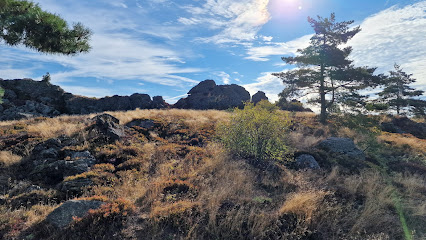
Butterfass
Explore Butterfass, a serene natural attraction in Falkenberg, Germany, surrounded by lush forests, rock formations, and tranquil waters—your perfect getaway.

Naturpark Nördlicher Oberpfälzer Wald e.V.
Explore the breathtaking landscapes and rich biodiversity of Naturpark Nördlicher Oberpfälzer Wald, a must-visit destination for nature lovers in Germany.

Steinwald
Discover the stunning Steinwald Mountain Range near Waldershof, Germany – a paradise for hikers and nature lovers alike!

Unmissable attractions to see
Old Stone Bridge
Discover the historic Old Stone Bridge in Regensburg, a medieval marvel connecting the past with the beauty of the Danube River.

Nationalpark Bayerischer Wald
Discover the breathtaking beauty of Nationalpark Bayerischer Wald, Germany’s natural gem filled with diverse wildlife, scenic hiking trails, and outdoor adventures.
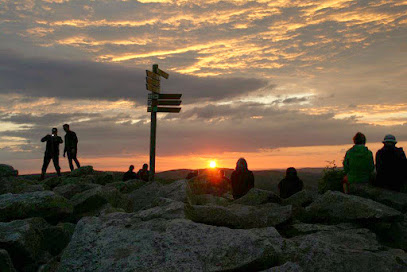
Höllohe Nature Park
Explore the enchanting Höllohe Nature Park in Teublitz, where wildlife meets tranquility in a stunning natural landscape.

Wild- und Freizeitpark Höllohe
Explore the enchanting Wild- und Freizeitpark Höllohe, where nature meets wildlife in a family-friendly adventure in Teublitz.
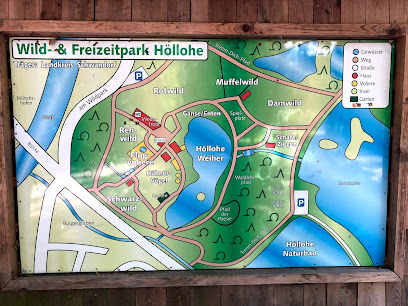
Erlebnisholzkugel
Experience family fun and adventure at Erlebnisholzkugel, the ultimate amusement park in Steinberg am See, perfect for visitors of all ages.

Schloß Guteneck
Experience the magic of Schloß Guteneck, a stunning castle blending history, culture, and entertainment in the heart of Guteneck.

Český les Protected Landscape Area
Explore the stunning Český Les Protected Landscape Area, a natural haven of forests, wildlife, and scenic trails in the heart of Czechia.

Donaustauf castle ruins
Discover the historic charm and stunning views at the ruins of Donaustauf Castle, a top tourist attraction in Bavaria, Germany.

Freilandmuseum Oberpfalz
Immerse yourself in Bavarian history at Freilandmuseum Oberpfalz, an open-air museum showcasing traditional rural life through authentic buildings and engaging exhibits.

Burgruine Weißenstein
Experience the charm of Burgruine Weißenstein, a historical landmark in Waldershof, with breathtaking views and scenic hiking trails.
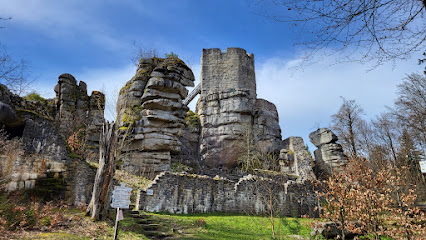
Waldnaabtal
Discover the breathtaking landscapes and rich wildlife of Waldnaabtal, a serene escape in the heart of Germany's stunning countryside.

Burgruine Flossenbürg
Explore the breathtaking ruins of Burgruine Flossenbürg, a historical gem in Bavaria offering stunning views and a journey through the past.

Max-Reger-Anlage
Explore the tranquil beauty of Max-Reger-Anlage, a state park in Weiden in der Oberpfalz, blending nature and cultural heritage in a serene setting.
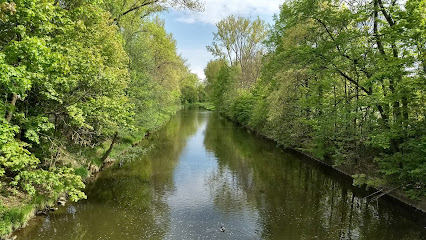
Burgruine Leuchtenberg
Explore the enchanting Burgruine Leuchtenberg, a historic castle ruin nestled in the scenic hills of Oberpfalz, perfect for hiking and history enthusiasts.

Waldeck Castle
Explore Waldeck Castle, a historical gem in Kemnath, surrounded by breathtaking landscapes and rich cultural heritage.

Essential places to dine
Erlebnisholzkugel
Discover Erlebnisholzkugel: A perfect fusion of traditional German dining and family-friendly amusement amidst stunning natural beauty.
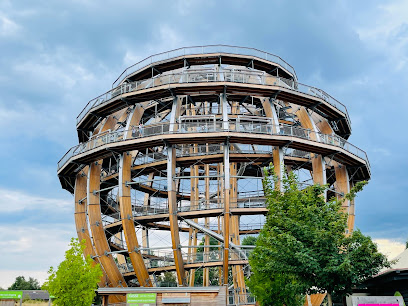
BräuWirt - Brauereigaststätte
Discover BräuWirt: A Bavarian gem offering hearty cuisine and locally brewed beers in Weiden in der Oberpfalz.

Der Birkenhof Spa & Genuss Resort
Discover unparalleled relaxation and gourmet dining at Der Birkenhof Spa & Genuss Resort in Neunburg vorm Wald.
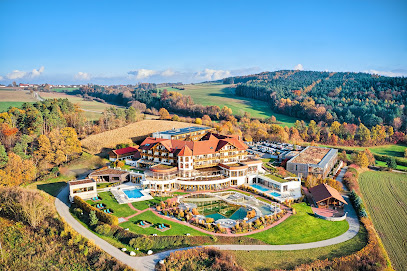
Brauereigasthof Jakob
Discover authentic Bavarian flavors at Brauereigasthof Jakob in Nittenau - where tradition meets hospitality.

Kleine Kappl
Discover Kleine Kappl in Bad Neualbenreuth: A charming restaurant offering authentic Bavarian cuisine in a cozy inn setting.

Wirtshaus Osl
Experience authentic Bavarian flavors at Wirtshaus Osl in Bad Kötzting – a culinary delight in every bite!

Restaurant Zum Alten Schuster
Experience authentic German cuisine at Restaurant Zum Alten Schuster in Weiden in der Oberpfalz – where tradition meets flavor.

Burg Falkenstein Restaurant
Discover Burg Falkenstein Restaurant: A picturesque venue blending Central European cuisine with enchanting views and exceptional wedding services.

Gasthof Kräuterbeck
Discover the heart of German cuisine and hospitality at Gasthof Kräuterbeck in beautiful Nabburg.

Beim Gloser
Discover authentic Bavarian flavors at Beim Gloser Beer Garden in Windischeschenbach – a delightful retreat for tourists seeking relaxation and local cuisine.
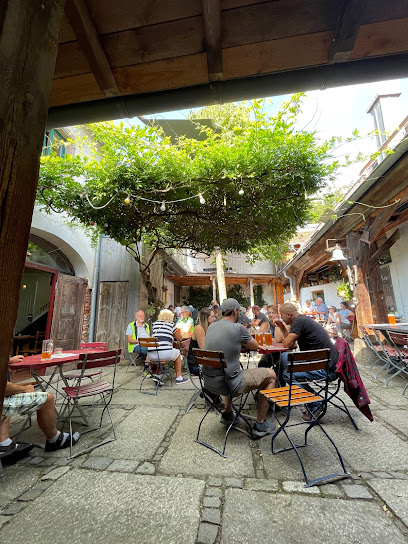
Zur Holzmühle
Discover Bavarian hospitality at Zur Holzmühle - a charming restaurant with fresh cuisine, fishing ponds, and scenic hiking trails.

Waldhaus im Steinwald
Discover serenity at Waldhaus im Steinwald: A picturesque beer garden surrounded by nature's beauty.

Alter Pfarrhof
Discover Alter Pfarrhof: A charming restaurant and hotel in Wernberg-Köblitz offering authentic German cuisine and warm hospitality.

Brucksaler Zoiglstubn & Eventstodl
Experience authentic Oberpfälzer cuisine at Brucksaler Zoiglstubn & Eventstodl – a cozy gastropub in Neustadt an der Waldnaab.

Gasthaus Zum Kouh-Lenzen
Discover authentic Bavarian flavors at Gasthaus Zum Kouh-Lenzen in Konnersreuth - where tradition meets hospitality.

Markets, malls and hidden boutiques
Donau-Einkaufszentrum
Explore the Donau-Einkaufszentrum, Regensburg's premier shopping mall with diverse stores, dining options, and a family-friendly atmosphere.

Regensburg Arcaden
Experience shopping like never before at Regensburg Arcaden, featuring diverse shops, enticing dining options, and a lively atmosphere in the heart of Germany.
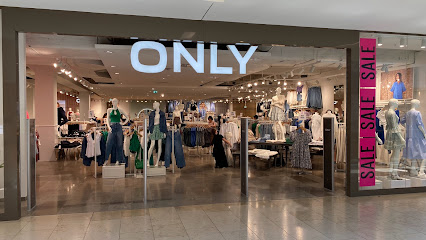
Autohof Neuhaus, Fa. Bergler
Discover Autohof Neuhaus, the perfect truck stop in Windischeschenbach with café, playground, car wash, and electric vehicle charging station.

City Center Weiden
Explore the vibrant City Center Weiden, a shopping paradise filled with diverse stores, delightful dining, and dynamic events in the heart of Weiden in der Oberpfalz.

NOC
Explore NOC Shopping Mall in Weiden for a unique shopping experience filled with diverse stores and dining options, perfect for all travelers.
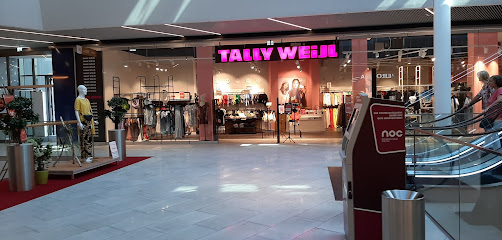
Serways Raststätte Oberpfälzer Alb Süd
Discover the comfort of Serways Raststätte Oberpfälzer Alb Süd, your perfect travel stop with delightful dining and a scenic Bavarian atmosphere.

E center Legat
Explore E center Legat in Weiden, your go-to supermarket for fresh produce, local specialties, and daily essentials during your travels.

Outlet Center Selb
Explore Outlet Center Selb, Germany's premier outlet mall, where exclusive deals and fashion meet in an exciting shopping experience.

Prackendorfer und Kulzer Moos
Discover the tranquil beauty of Prackendorfer und Kulzer Moos, a stunning nature preserve in Thanstein, perfect for nature lovers and adventurers alike.

Naturpark Nördlicher Oberpfälzer Wald e.V.
Explore the breathtaking landscapes and rich biodiversity of Naturpark Nördlicher Oberpfälzer Wald, a serene escape in Bavaria, Germany.
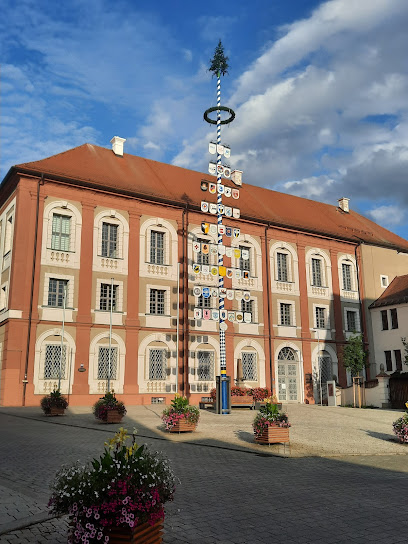
Delicado Wine Shop & Delicatessen
Discover gourmet delights at Delicado Wine Shop & Delicatessen, where artisanal cheeses, fine wines, and exquisite treats await in Weiden.

Lebensfreuden UG Sieglinde Scharnagl
Explore Lebensfreuden UG in Weiden for unique gifts and memorable souvenirs that capture the spirit of Oberpfalz.
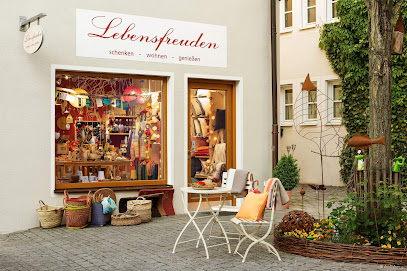
Gisela Throner
Discover Gisela Throner in Rötz, Germany, your go-to destination for top-notch fishing gear and local expertise.
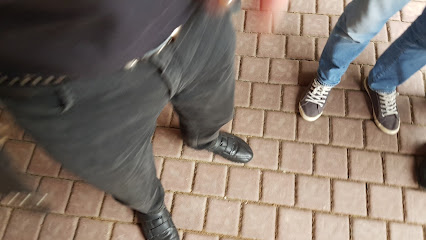
Drubba Uhren & Geschenke
Explore exquisite watches and unique gifts at Drubba Uhren & Geschenke in Regensburg, where craftsmanship meets elegance.

Tourismuszentrum Oberpfälzer Wald, Landkreis Schwandorf
Explore the natural beauty and cultural richness of Oberpfälzer Wald at the Tourist Information Center in Landkreis Schwandorf.

Essential bars & hidden hideouts
Erlebnisholzkugel
Discover the magic of Erlebnisholzkugel, a delightful amusement park with thrilling rides, beautiful nature, and delicious dining options in Steinberg am See.

Schloß Guteneck
Discover the enchanting Schloß Guteneck, a historical castle in Bavaria, blending rich heritage with delightful dining and vibrant entertainment.

McDonald's
Discover convenience and flavor at McDonald's Wernberg-Köblitz, the perfect stop for a quick meal in the heart of Bavaria.

Serways Raststätte Oberpfälzer Alb Nord
Discover comfort and delicious cuisine at Serways Raststätte Oberpfälzer Alb Nord, your ideal rest stop along BAB6 in Germany.

BräuWirt - Brauereigaststätte
Discover the heart of Bavarian hospitality at BräuWirt - a brewpub serving traditional German cuisine and freshly crafted beers in Weiden.

Serways Raststätte Oberpfälzer Alb Süd
Discover the perfect stopover at Serways Raststätte Oberpfälzer Alb Süd, where comfort meets culinary delights on your journey through Bavaria.

Brauereigasthof Jakob
Discover authentic Bavarian cuisine and hospitality at Brauereigasthof Jakob in Nittenau, a perfect blend of tradition and comfort.

Wild Vaitl
Experience the vibrant atmosphere and Bavarian flavors at Wild Vaitl, Amberg's favorite beer garden and pub offering a memorable social experience.

Beim Gloser
Discover the authentic taste of Bavarian culture at Beim Gloser Beer Garden, where traditional Oberpfälzer cuisine meets a serene outdoor setting.

B1 Platzhirsch/Club/Cocktailbar/Wein Lounge/Bodenmais Instagram: b1_platzhirsch_cocktailbar_
Experience the vibrant nightlife of Bodenmais at B1 Platzhirsch, where expertly crafted cocktails meet a lively atmosphere.

Brucksaler Zoiglstubn & Eventstodl
Discover the heart of Bavarian cuisine at Brucksaler Zoiglstubn & Eventstodl, a cozy gastropub in Neustadt an der Waldnaab offering authentic local dishes.

Alte Mühle Gehenhammer Oberpfälzer Waldverein Georgenberg e.V.
Experience the serene charm of Alte Mühle Gehenhammer, a delightful beer garden nestled in the enchanting Oberpfälzer Wald.

Zoiglstube Oppl Wilhelm
Experience the authentic Bavarian flavors and vibrant atmosphere of Zoiglstube Oppl Wilhelm in Mitterteich's charming beer garden.

Zoigl zum Waldhauser
Experience the essence of Bavarian cuisine at Zoigl zum Waldhauser, where tradition meets taste in every delightful dish.

Lingl-Zoigl
Experience authentic Bavarian flavors and local brews at Lingl-Zoigl, a cozy pub in Windischeschenbach, perfect for tourists seeking tradition.

Local Phrases about Oberpfälzer Wald
-
- HelloServus
[Zer-voos] - GoodbyePfiat di
[Pfee-aht dee] - YesJa
[Yah] - NoNaa
[Nah] - Please/You're welcomeBitte
[Bit-teh] - Thank youDanke
[Dahn-keh] - Excuse me/SorryEntschuldigung
[Ent-shool-dee-goong] - How are you?Wie geht's?
[Vee geyts] - Fine. And you?Gut. Und dir?
[Goot. Oond deer] - Do you speak English?Sprechen Sie Englisch?
[Shpre-khen zee Eng-leesh] - I don't understandI versteh ned
[Ee fair-shtay ned]
- HelloServus
-
- I'd like to see the menu, pleaseI hätt gern die Karte, bitte
[Ee hat gairn dee kar-teh, bit-teh] - I don't eat meatI ess koa Fleisch
[Ee ess koh-ah Fl-eye-sh] - Cheers!Prost!
[Prohst] - I would like to pay, pleaseI möcht bitte zahlen
[Ee merkht bit-teh tsah-len]
- I'd like to see the menu, pleaseI hätt gern die Karte, bitte
-
- Help!Hilfe!
[Hil-feh] - Go away!Geh weg!
[Gey vekh] - Call the Police!Ruf die Polizei!
[Roof dee Po-lee-tsey] - Call a doctor!Ruf'n Doktor!
[Roof'n Dohk-tor] - I'm lostI bin verloren
[Ee been fair-loh-ren] - I'm illI bin krank
[Ee been krahngk]
- Help!Hilfe!
-
- I'd like to buy...Ich möcht ... kaufen
[Ikh merkht ... kow-fen] - I'm just lookingI schau nur
[Ee sh-ow noor] - How much is it?Was kostet das?
[Vahs kohstet dahs] - That's too expensiveDes is z' teier
[Des is tseer] - Can you lower the price?Geht da Preis runter?
[Geyt dah prees roon-ter]
- I'd like to buy...Ich möcht ... kaufen
-
- What time is it?Wie spät ist es?
[Vee sh-payt ist es] - It's one o'clockEs ist ein Uhr
[Es ist iyn oor] - Half past (10)Halb elf
[Halb elf] - MorningMorgn
[Mohr-gn] - AfternoonNoon
[Noon] - EveningObnd
[Oh-bnd] - YesterdayGestern
[Geh-shtern] - TodayHeid
[Haid] - TomorrowMorgn
[Mohr-gn] - 1Eins
[Iyns] - 2Zwei
[Tsv-eye] - 3Drei
[Dr-eye] - 4Vier
[Fee-er] - 5Fünf
[Foonf] - 6Sechs
[Zeks] - 7Sieben
[Zee-ben] - 8Acht
[Akht] - 9Neun
[Noy-n] - 10Zehn
[Tsayn]
- What time is it?Wie spät ist es?
-
- Where's a/the...?Wo ist ein/der...?
[Voh ist iyn/dehr] - What's the address?Wie ist die Adresse?
[Vee ist dee Ah-dreh-suh] - Can you show me (on the map)?Kannst du mir zeigen (auf der Karte)?
[Kahnst doo meer tsigh-en (ouf dehr kar-teh)] - When's the next (bus)?Wann kommt der nächste (Bus)?
[Vahn kohmt dehr nekhs-teh (Boos)] - A ticket (to ....)Eine Fahrkarte (nach ...)
[Iyn-eh Fahr-kar-teh (nakh ...)]
- Where's a/the...?Wo ist ein/der...?
History of Oberpfälzer Wald
-
Nestled in the northeastern part of Bavaria, the Oberpfälzer Wald (Upper Palatinate Forest) is a region rich in history and culture. Known for its dense forests, rolling hills, and picturesque villages, it has been a crossroads of European history for centuries. This region offers a unique blend of natural beauty and historical significance, making it a captivating destination for travelers.
-
Long before the Romans or the Germanic tribes, the Celts inhabited the Oberpfälzer Wald region. Archaeological finds, such as the ancient hill forts and burial mounds, attest to their presence. The Celts left behind a legacy of craftsmanship and trade, which laid the foundation for the region’s development in the following centuries.
-
The Roman Empire's expansion reached the outskirts of the Oberpfälzer Wald around the 1st century AD. The Romans established several military camps and trade routes in the region, influencing local culture and economy. Remnants of Roman roads and fortifications can still be found, offering a glimpse into the ancient past of the area.
-
The Middle Ages saw the construction of numerous castles and fortresses in the Oberpfälzer Wald. These structures served as defensive strongholds and administrative centers. Notable examples include the Flossenbürg Castle, which dates back to the 12th century, and Leuchtenberg Castle, one of the largest and best-preserved castles in the region. These medieval landmarks are a testament to the region's strategic importance during this period.
-
The Oberpfälzer Wald was significantly impacted by the Thirty Years' War (1618-1648), a devastating conflict that ravaged much of Europe. The region saw numerous battles and skirmishes, leading to widespread destruction and depopulation. Many towns and villages were burned down, and the local economy suffered greatly. The war's aftermath left deep scars that took decades to heal.
-
The 18th and 19th centuries brought industrialization to the Oberpfälzer Wald, transforming its economic landscape. One of the most notable industries was glassmaking, with the region becoming renowned for its high-quality glass products. The tradition of glassmaking continues to this day, with several glassworks and museums dedicated to this intricate craft, allowing visitors to explore the rich industrial heritage of the area.
-
During World War II, the Oberpfälzer Wald was the site of the Flossenbürg Concentration Camp, established by the Nazis in 1938. It was one of the many concentration camps where thousands of prisoners were subjected to brutal labor and inhumane conditions. Today, the Flossenbürg Memorial Site serves as a poignant reminder of the atrocities committed, offering educational exhibits and guided tours to honor the victims and educate future generations.
-
After the devastation of World War II, the Oberpfälzer Wald underwent a period of recovery and modernization. Efforts were made to rebuild towns and infrastructure, and the region gradually transformed into a hub for tourism and outdoor activities. The natural beauty of the forests, lakes, and hiking trails attracted visitors, while cultural festivals and historical sites highlighted the rich heritage of the area.
Oberpfälzer Wald Essentials
-
Oberpfälzer Wald is located in the Upper Palatinate region of Bavaria, Germany. The nearest international airports are Nuremberg Airport (NUE) and Munich Airport (MUC), both of which are well-connected to major cities across Europe and the world. From these airports, you can take a train or rent a car to reach the region. The German railway system, Deutsche Bahn, offers frequent services to the towns within Oberpfälzer Wald, such as Weiden and Schwandorf. For those driving, the region is accessible via the A93 and A6 motorways.
-
Within Oberpfälzer Wald, public transportation is reliable and includes buses and regional trains operated by Deutsche Bahn. Renting a car is highly recommended for exploring the scenic landscapes, historic sites, and hidden gems at your own pace. Biking is also a popular option, with numerous well-maintained trails crisscrossing the region. Taxis are available but can be expensive for long distances.
-
The official currency in Germany is the Euro (EUR). Major credit and debit cards are widely accepted in hotels, restaurants, and larger shops. However, it's advisable to carry some cash, particularly for smaller establishments and rural areas. ATMs are readily available in towns throughout Oberpfälzer Wald.
-
Oberpfälzer Wald is generally a safe region for tourists. However, it is always prudent to take standard precautions. Avoid isolated areas at night and be mindful of your belongings in crowded places. There are no specific high-crime areas targeting tourists, but staying alert and aware of your surroundings is always wise.
-
In case of emergency, dial 112 for medical, police, or fire assistance. Hospitals and clinics in towns like Weiden and Schwandorf are well-equipped to handle emergencies. Pharmacies are available for minor health issues and over-the-counter medications. It's highly recommended to have travel insurance that covers medical emergencies.
-
Fashion: Do dress comfortably and appropriately for outdoor activities. Pack layers, as weather can be unpredictable. Avoid overly casual attire when dining in upscale restaurants. Religion: Do respect local customs, especially when visiting churches. Public Transport: Do validate your ticket before boarding trains and buses. Don't talk loudly or play music on public transport. Greetings: Do greet people with a friendly 'Guten Tag' (Good day) or 'Grüß Gott' (God bless). A firm handshake is customary. Eating & Drinking: Do try local Bavarian dishes and beers. Don't rush meals; enjoy the leisurely dining experience.
-
To experience Oberpfälzer Wald like a local, visit the weekly farmers' markets in towns like Weiden and Cham. Take part in local festivals and events, such as the Oberpfälzer Volksfest. Engage with locals who are generally friendly and enjoy sharing insights about their region. Explore the numerous hiking and biking trails that offer stunning natural landscapes and historical landmarks. Don't miss visiting the Waldnaab Valley and its scenic beauty.
Trending Landmarks in Oberpfälzer Wald
-
Old Stone Bridge
-
Baumwipfelpfad Bavarian Forest
-
Walhalla
-
Nationalpark Bayerischer Wald
-
Drachenhöhle
-
Pottenstein Castle
-
Gößweinstein Castle
-
Waldnaabtal
-
Burgruine Leuchtenberg
-
Upper Palatinate Tower
-
Falkenberg Castle
-
Naturdenkmal Hochfels
-
Butterfass
-
Naturpark Nördlicher Oberpfälzer Wald e.V.
-
Steinwald
Nearby Cities to Oberpfälzer Wald
-
Things To Do in Karlovy Vary
-
Things To Do in Nuremberg
-
Things To Do in Český Krumlov
-
Things To Do in České Budějovice
-
Things To Do in Prague
-
Things To Do in Linz
-
Things To Do in Munich
-
Things To Do in Salzburg
-
Things To Do in Rothenburg ob der Tauber
-
Things To Do in Kutná Hora
-
Things To Do in Dresden
-
Things To Do in Wurzburg
-
Things To Do in Hallstatt
-
Things To Do in Kitzbühel
-
Things To Do in Erfurt






